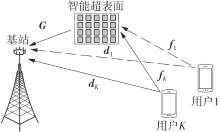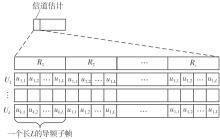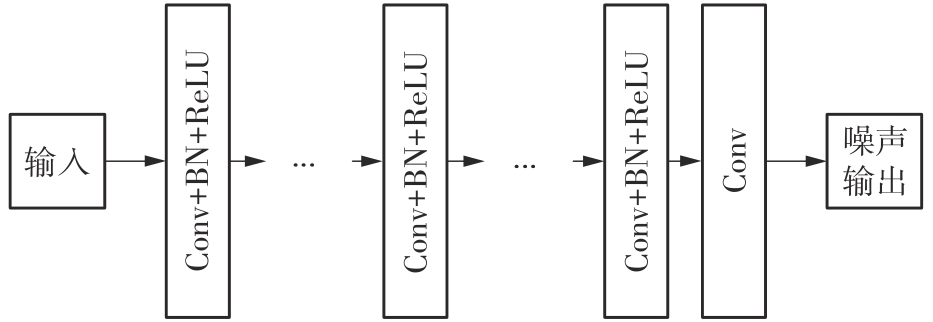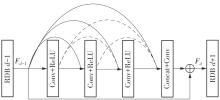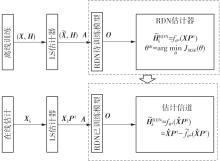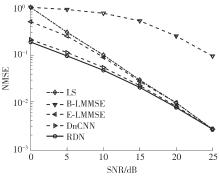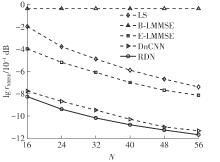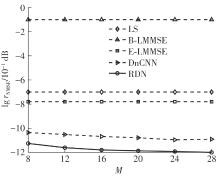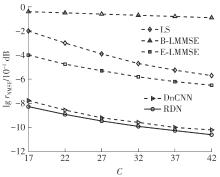| 1 |
马向进,韩家奇,乐舒瑶,等 .可重构智能超表面设计及其无线通信系统应用[J].无线电通信技术,2022,48(2):258-268.
|
|
MA Xiangjin, HAN Jiaqi, YUE Shuyao,et al .Reconfigurable intelligent metasurface design and applications in wireless communication systems[J].Radio Communications Technology,2022,48(2):258-268.
|
| 2 |
RUAN C, ZHANG Z, JIANG H,et al .Approximate message passing for channel estimation in reconfigurable intelligent surface aided MIMO multiuser systems[J].IEEE Transactions on Communications,2022,70(8):5469-5481.
|
| 3 |
BJÖRNSON E, ÖZDOGAN Ö, LARSSON E G .Reconfigurable intelligent surfaces:Three myths and two critical questions[J].IEEE Communications Magazine,2020,58(12):90-96.
|
| 4 |
MISHRA D, JOHANSSON H .Channel estimation and low-complexity beamforming design for passive intelligent surface assisted MISO wireless energy transfer[C]∥Proceedings of the 2019 IEEE International Conference on Acoustics,Speech and Signal Processing (ICASSP).Brighton:IEEE,2019:4659-4663.
|
| 5 |
YANG Y, ZHENG B, ZHANG S,et al .Intelligent reflecting surface meets OFDM:protocol design and rate maximization[J].IEEE Transactions on Communications,2020,68(7):4522-4535.
|
| 6 |
JENSEN T L, DECARVALHO E .An optimal channel estimation scheme for intelligent reflecting surfaces based on a minimum variance unbiased estimator[C]∥Proceedings of the 2020 IEEE International Conference on Acoustics,Speech and Signal Processing (ICASSP).Barcelona:IEEE,2020:5000-5004.
|
| 7 |
DE ARAÚJO G T, DE ALMEIDA A L F .PARAFAC-based channel estimation for intelligent reflective surface assisted MIMO system[C]∥Proceedings of 2020 IEEE 11th Sensor Array and Multichannel Signal Processing Workshop (SAM).Hangzhou:IEEE,2020:1-5.
|
| 8 |
ZHENG B, ZHANG R .Intelligent reflecting surface-enhanced OFDM:channel estimation and reflection optimization[J].IEEE Wireless Communications Letters,2019,9(4):518-522.
|
| 9 |
YOU C, ZHENG B, ZHANG R .Intelligent reflecting surface with discrete phase shifts:channel estimation and passive beamforming[C]∥Proceedings of the 2020 IEEE International Conference on Communications (ICC).Dublin:IEEE,2020:1-6.
|
| 10 |
CHEN J, LIANG Y C, CHENG H V,et al .Channel estimation for reconfigurable intelligent surface aided multi-user MIMO systems[EB/OL].(2019-12-31)[2023-03-03]..
|
| 11 |
HE Z Q, YUAN X .Cascaded channel estimation for large intelligent metasurface assisted massive MIMO[J].IEEE Wireless Communications Letters,2019,9(2):210-214.
|
| 12 |
WANG Z, LIU L, CUI S .Channel estimation for intelligent reflecting surface assisted multiuser communications[C]∥Proceedings of the 2020 IEEE Wireless Communications and Networking Conference (WCNC).Seoul:IEEE,2020:1-6.
|
| 13 |
WANG Z, LIU L, CUI S .Channel estimation for intelligent reflecting surface assisted multiuser communications:Framework,algorithms,and analysis[J].IEEE Transactions on Wireless Communications,2020,19(10):6607-6620.
|
| 14 |
ALEXANDROPOULOS G C, VLACHOS E .A hardware architecture for reconfigurable intelligent surfaces with minimal active elements for explicit channel estimation[C]∥Proceedings of the 2020 IEEE International Conference On Acoustics,Speech and Signal Processing (ICASSP).Barcelona:IEEE,2020:9175-9179.
|
| 15 |
HINTON G E, SALAKHUTDINOV R R .Reducing the dimensionality of data with neural networks[J].Science,2006,313(5786):504-507.
|
| 16 |
LECUN Y, BENGIO Y, HINTON G .Deep learning[J].Nature,2015,521(7553):436-444.
|
| 17 |
WANG T, WEN C K, WANG H,et al .Deep learning for wireless physical layer:opportunities and challenges[J].China Communications,2017,14(11):92-111.
|
| 18 |
TAHA A, ALRABEIAH M, ALKHATEEB A .Enabling large intelligent surfaces with compressive sensing and deep learning[J].IEEE Access,2021,9:44304-44321.
|
| 19 |
TAHA A, ALRABEIAH M, ALKHATEEB A .Deep learning for large intelligent surfaces in millimeter wave and massive MIMO systems[C]∥Proceedings of the 2019 IEEE Global Communications Conference (GLOBECOM).Hawaii:IEEE,2019:1-6.
|
| 20 |
HUANG C, ALEXANDROPOULOS G C, YUEN C,et al .Indoor signal focusing with deep learning designed reconfigurable intelligent surfaces[C]∥Proceedings of the 2019 IEEE 20th International Workshop on Signal Processing Advances in Wireless Communications (SPAWC).Cannes:IEEE,2019:1-5.
|
| 21 |
ALEXANDROPOULOS G C, SAMARAKOON S, BENNIS M,et al .Phase configuration learning in wireless networks with multiple reconfigurable intelligent surfaces[C]∥Proceedings of the 2020 IEEE Globecom Workshops (GC Wkshps).Taiwan:IEEE,2020:1-6
|
| 22 |
YANG H, XIONG Z, ZHAO J,et al .Deep reinforcement learning-based intelligent reflecting surface for secure wireless communications[J].IEEE Transactions on Wireless Communications,2020,20(1):375-388.
|
| 23 |
LIU C, LIU X, NG D W K,et al .Deep residual learning for channel estimation in intelligent reflecting surface-assisted multi-user communications[J].IEEE Transactions on Wireless Communications,2021,21(2):898-912.
|
| 24 |
BIGUESH M, GERSHMAN A B .Training-based MIMO channel estimation:a study of estimator tradeoffs and optimal training signals[J].IEEE Transactions on Signal Processing,2006,54(3):884-893
|
